Our throwaway culture views everything as disposable—single-use plastic, fast fashion, fast furniture, a third of the food we produce, the hungry people that food could feed. The systems that sustain us cannot withstand this abuse. But instead of moving to Mars (which will never happen), why not save what we can here on Earth?
Completing (or organizing) a few recent projects at home, this theme of refurbishment kept popping up.
Weeding versus clearcutting
My yard was already a bit of a jungle before I left town in January for over a month. Since I returned last week, every time I looked at it, I threw my hands in the air.
But yesterday, instead of taking a chainsaw to the plants while screaming “Uwaaauwaargh!” like a maniac, I focused on cleaning up just one area and surgically removed weeds in and around the native ceanothus. (I took the left pic below mid job.) That work didn’t take long and, being up close to my favorite plant (don’t tell the others), I observed healthy and abundant new green growth covered with clusters of flowers about to bloom. What a reward!
Thus motivated to keep going, I next scheduled a delivery of free wood chips through ChipDrop. The service connects homeowners in need of water-retaining, weed-supressing mulch with nearby arborists who will drop off as much as 20 cubic yards of wood chips. (Although I think we received more than that with our previous drop in 2023!) Both sides benefit. The arborist finds a spot to unload their chips and the recipient saves money.
Twenty cubic yards of wood chips is a committment. Bring it on.
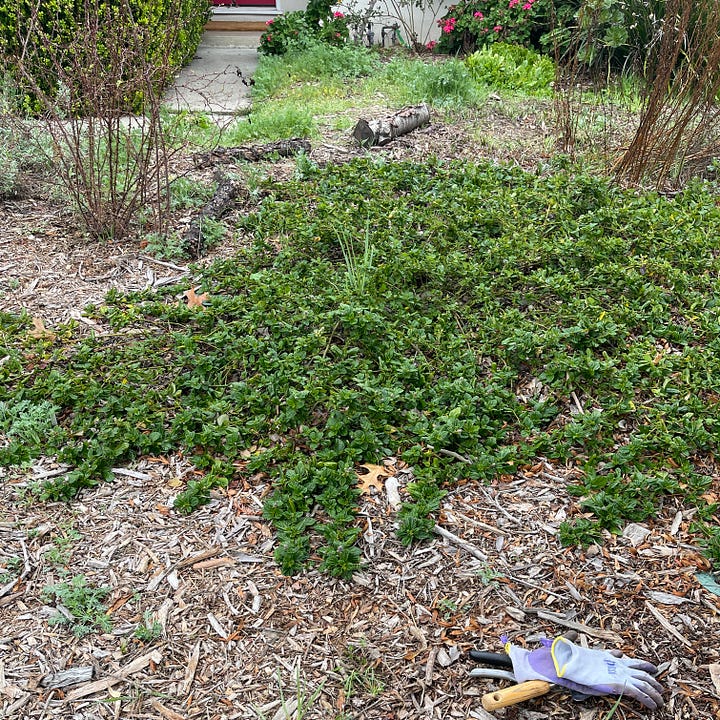
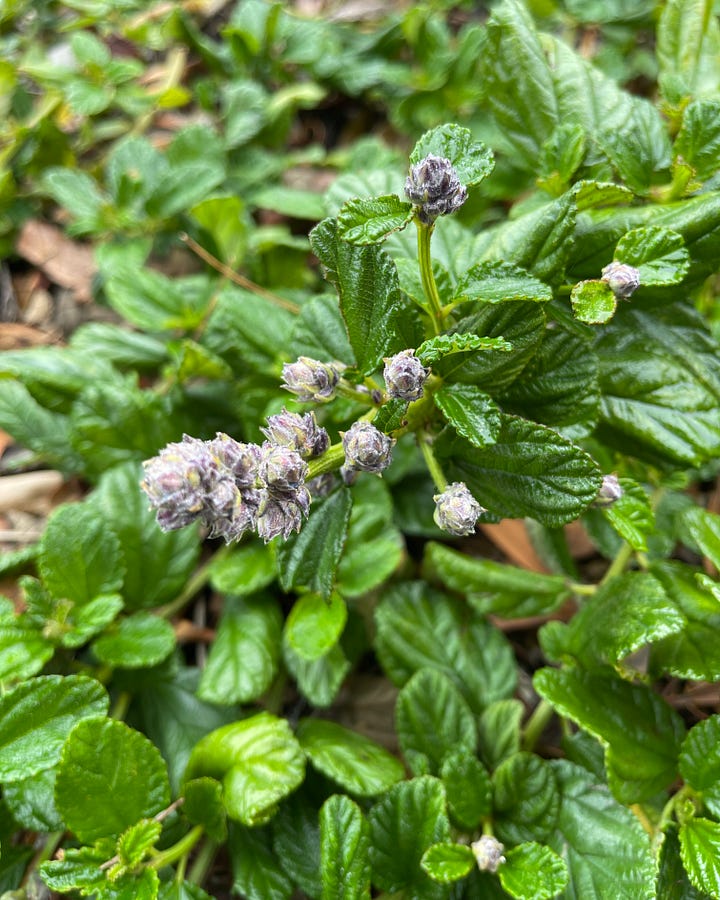
(Go here to read about the benefits of planting natives.)
Renovation versus demolition
On the stairs and banister in the pics below, I really didn’t want to add another coat of thick, uneven paint or tear anything out and replace it. So I had the black paint removed and the surfaces refinished. The white stair risers will need repainting. Restoration requires patience. A wrecking ball does not.
The stained and scarred floors have also been refinished. I could have had them torn out and replaced but the character of this old oak looks so warm and inviting. And, like this old house, it has a history.
New doesn’t necessarily mean improved. It does likely mean open your wallet wide though.
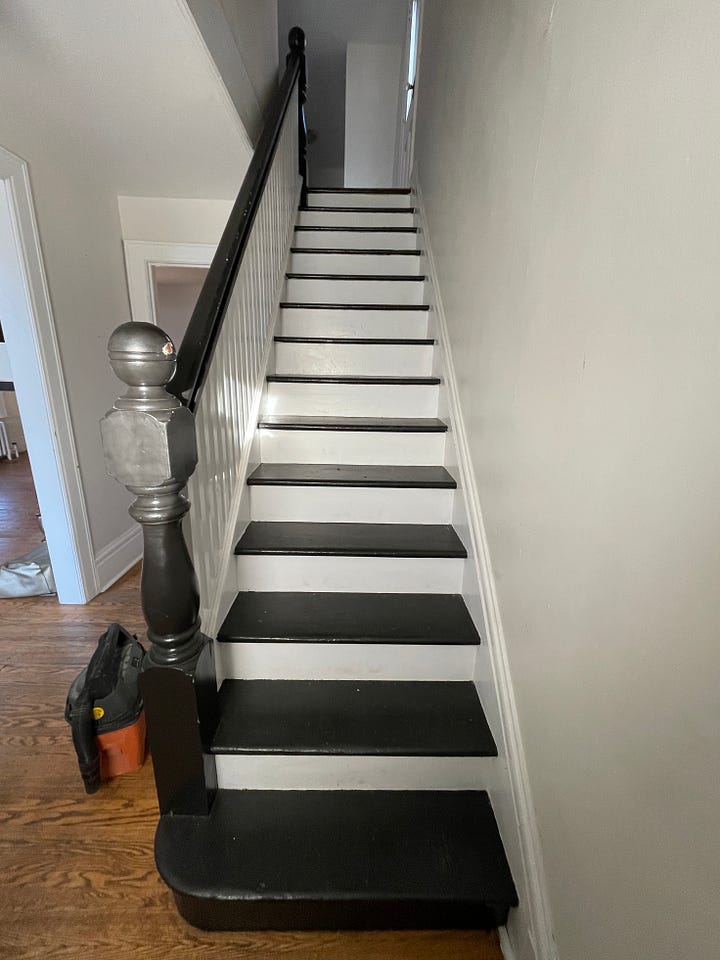
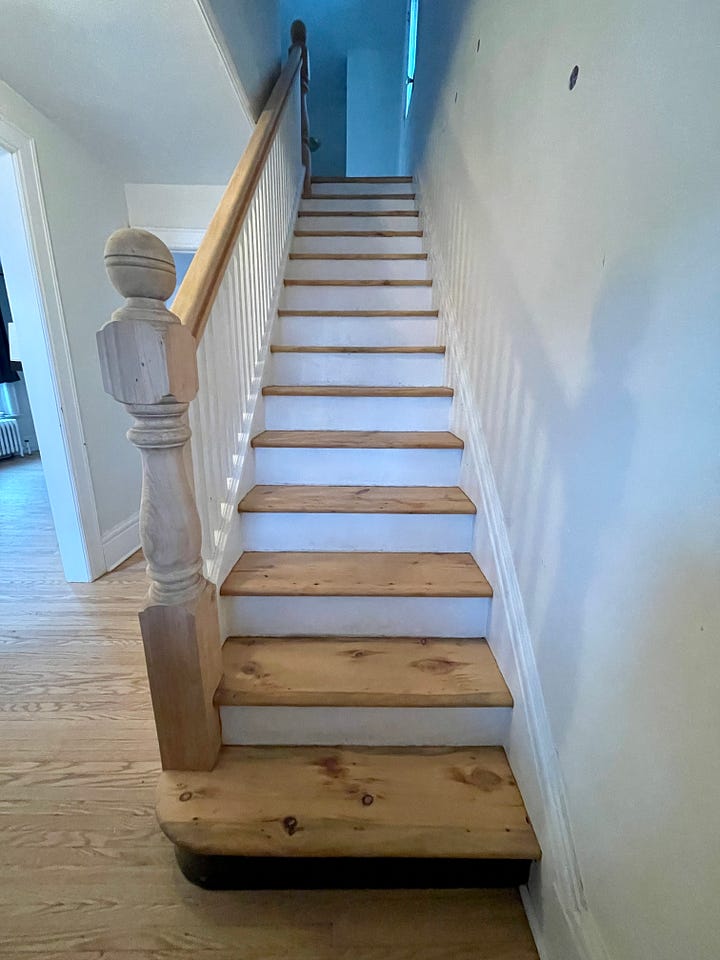
Repairing versus trashing
The “pattern” for the jean bag below has been one of my top blog posts for a year. It must be the allure of built-in pockets.
The jeans had been a favorite pair of my daughter MK back in high school. So I turned them into a functional keepsake—and kept the bag for myself! Because the lightweight jeans were already well worn and I carry this bag with me everywhere, a couple of tiny holes recently developed. But the bag still had a lot of life left in it. So I sewed on a couple of these patches. In time, the bag will be covered with patches stitched on with all the colors of the rainbow. It should look great!


What I’m reading
The Serviceberry, Abundance and Reciprocity in the Natural World, Robin Wall Kimmerer’s follow-up to her phenomenal book Braiding Sweetgrass, is out. From the synopsis: “a bold and inspiring vision for how to orient our lives around gratitude, reciprocity, and community, based on the lessons of the natural world.”





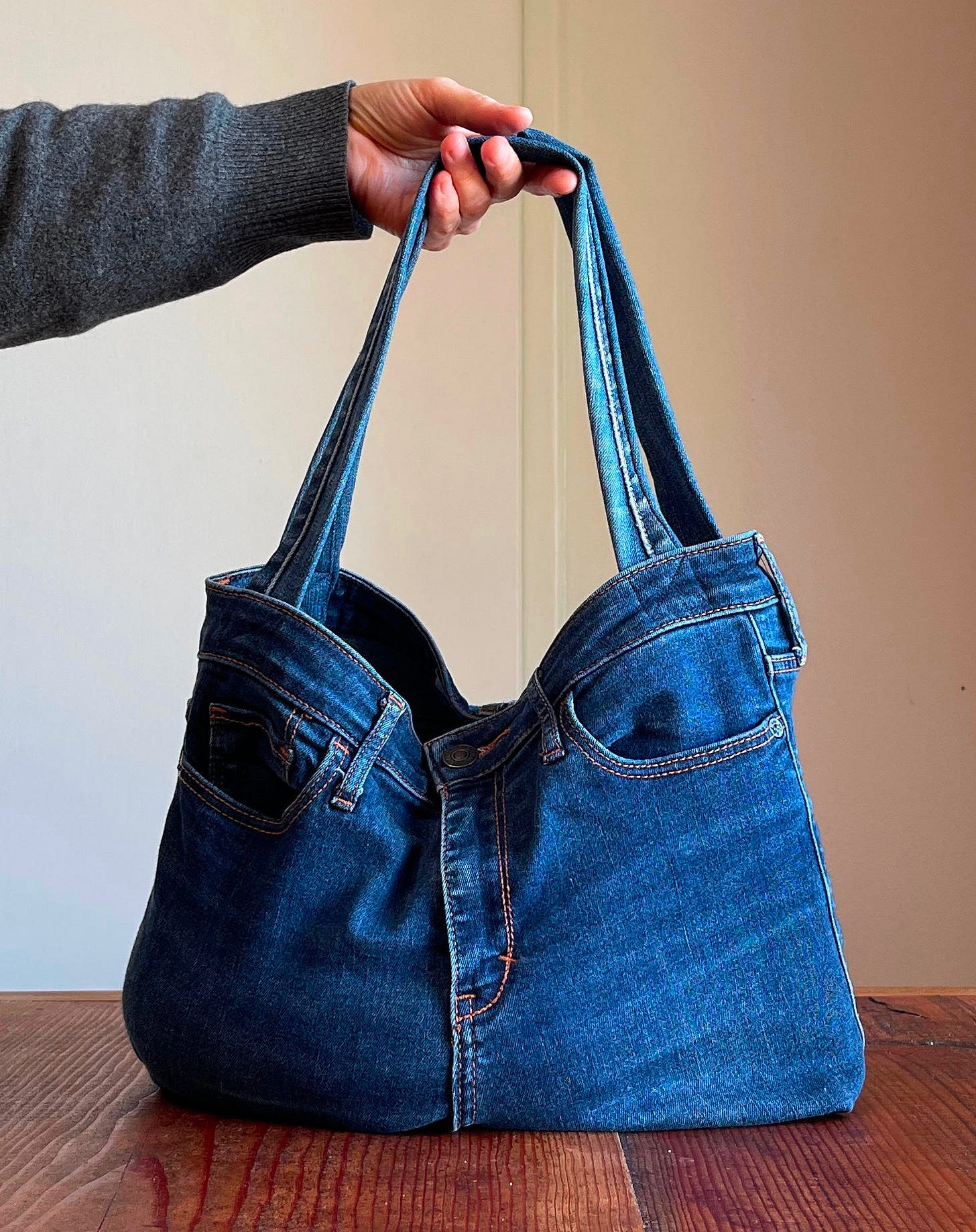
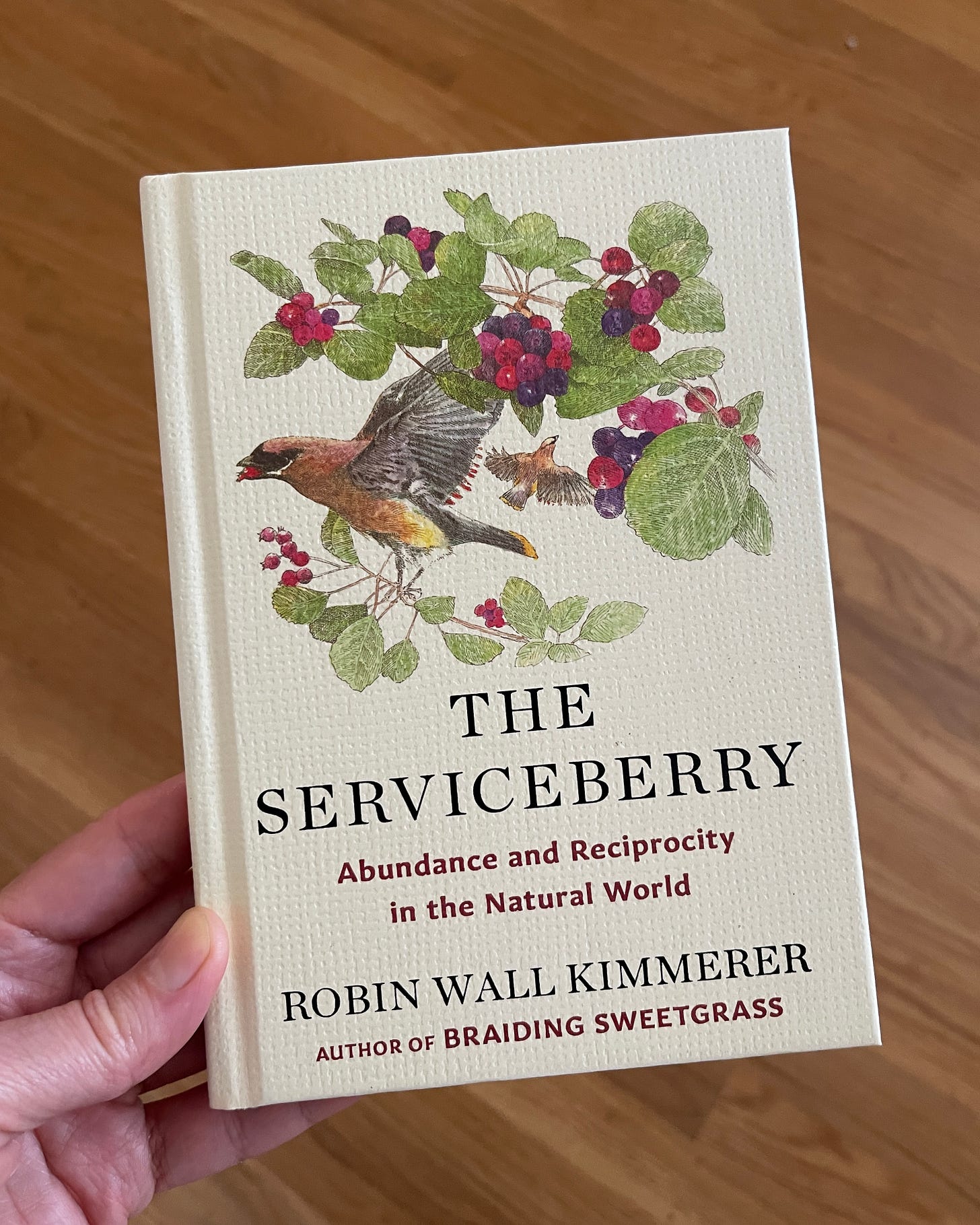

Instead of buying gifts, I ask friends if there is anything I can repair. I have both a sewing machine and serger. I love to tear clothing apart and make it useful.
Love this. Powerful metaphor and advice for where we are right now.